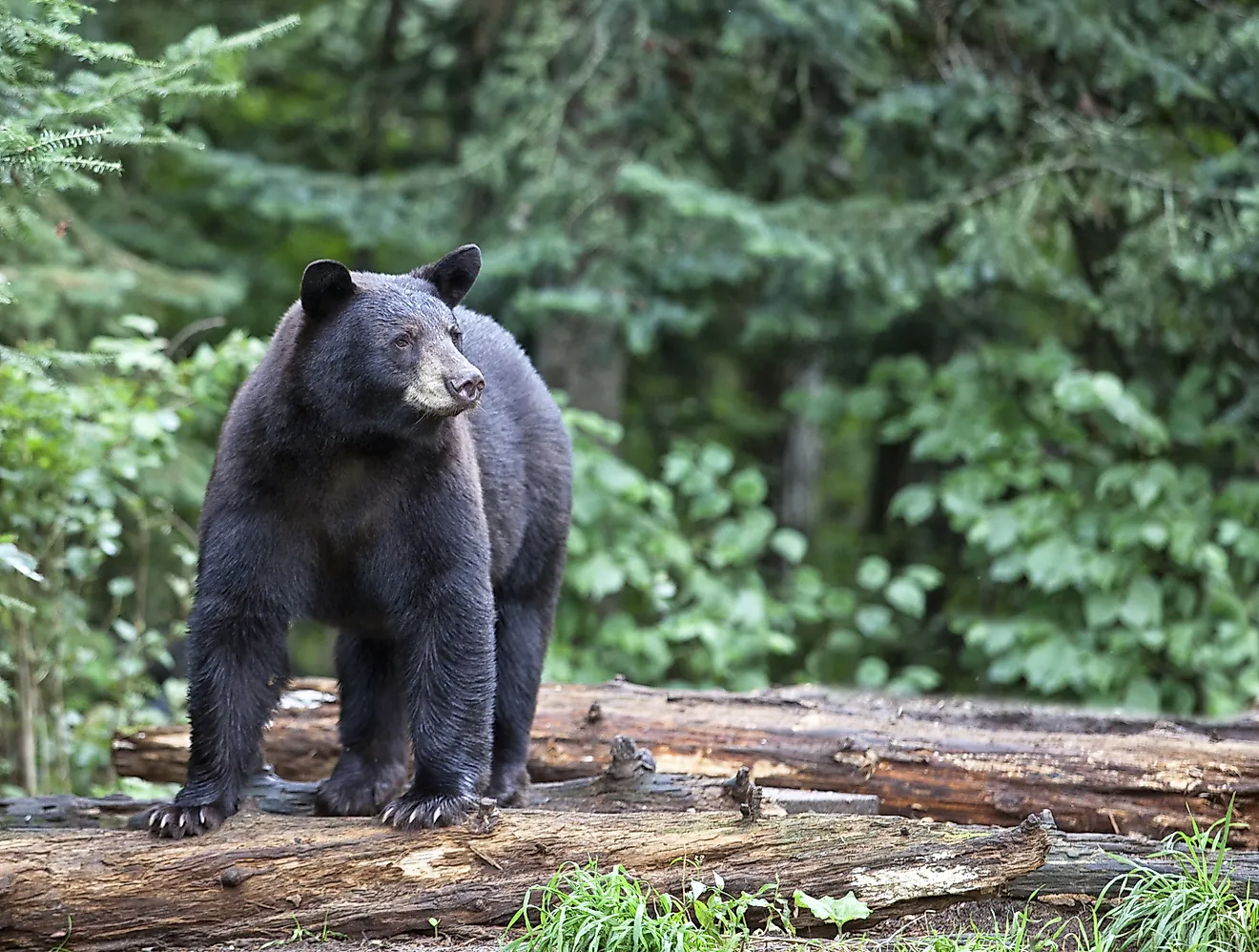Black Bear Facts: Animals of North America

Physical Description
The American Black Bear’s binomial scientific name, Ursus americanus, simply means “American bear”. There are a total of 16 American Black Bear subspecies that have been recorded by taxonomists up to the present time. Contrary to what the name suggests, not all members of the American “Black” bear species are actually black in color. Western black bears often show hints of cinnamon and brown colorations in addition to black, while their Eastern counterparts may be nearly brown all over. The weight of American Black Bears can tend to vary considerably, according to their respective sex, age, the season of the year, location, and state of health. Adult males can range between little more than 100 to more than 500 pounds in size. Generally, sows (females) are around 30% less massive than boars (males), bears on the East Coast are heavier than those on the West Coast, and northern bears heavier than their southern counterparts. The largest wild black bears to be hunted and killed have exceeded 800 pounds, while the largest in captivity have approached 1,000 pounds. The animals, which have short, non-retractable claws, have a straighter profile from nose to forehead, and relatively longer, less rounded ears, than do many other bears. Typical American Black Bear adults are known to be approximately 3 feet tall on all fours, with a nose to tail length of about 75 inches, and very short tails relative to body size.
Diet
American Black Bears are omnivorous animals which prefer to feed on a wide variety of foods. Their typical diets include insects, nuts, plants, honey, fruits, carrion, smaller mammals, and fish. Their diets vary greatly depending on their actual location and season of the year. Black bears will occasionally kill moose or young deer calves for survival, strengthening their reputations as very opportunistic eaters.
Habitat and Range
The bears, which are excellent tree climbers, are considered to be the North American continent's smallest, yet most widely distributed, bear species. Their population, by some estimates approaches 1 million strong, and has been helped along by game and nature preserves and parks in Mexico, the United States, and Canada alike. Black bears are known to live mostly in largely forested areas, particularly deciduous and coniferous forests, but often leave their conventional habitats in search of water and food. This may often be the result of them occasionally being attracted to human communities, due to the availability of food in developed regions, such as in people’s trash or their farms and gardens. Black bears are constant roamers that traverse large territories. American Black Bears were historically known to occupy almost all of North America's forested regions. However, they are now more restricted to the areas less densely populated by humans in the US, but still inhabit most of their historical regions in Canada, apart from the Central Plains' intensively farmed and residentially developed areas. They have been listed by the International Union for Conservation of Nature (IUCN) as a 'least concern' species. This is due to their large global population, which is estimated to be around twice that of all other species of bears combined, facilitated by their widespread distribution and adaptable lifestyles. Most other species of bears are either endangered or extinct. Legal hunting seasons are often offered in a variety of areas to help in keeping the American Black Bear population in check, as these creatures provided high quality game meat. Selling bear parts, however, is illegal in most places, and lawbreakers may incur strict financial and prison time penalties for selling them. The new millennium has seen their geographic and numerical presences alike continue to grow.
Social Behavior
One behavioral trait that is common to most American Black Bear subspecies is the ability to use their claws and teeth to mark trees as a form of communication. These animals, which are solitary in nature apart from cubs and mothers, normally prefer to forage alone. They can, however, occasionally tolerate one another when there is plenty of food in a particular region, and instead forage in groups. A large percentage of black bears hibernate, depending on the availability of food and local weather conditions. For instance, bears may not hibernate in regions with a consistent supply of food and warm weather throughout winter.
Reproductive Habits
American Black bears are known to mate during the summer months, and have a gestation period of 63-70 days. An average female can give birth to 1-6 cubs in her lifetime, with her cubs remaining with her for one and a half years after the weaning period which is usually 6-8 months. Female black bears usually become sexually mature after around 2 years from birth, but may occasionally reproduce after a year when their young ones pass away due to various reasons.











